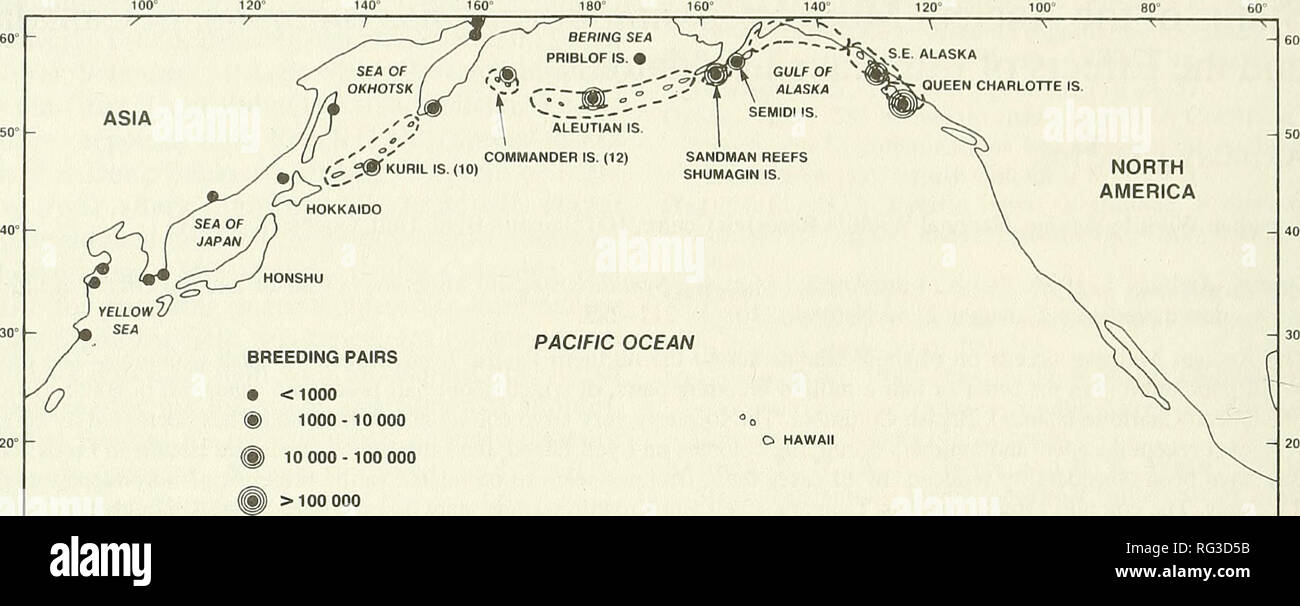. The Canadian field-naturalist. 212 The Canadian Field-Naturalist Vol. 108. Figure 1. Global distribution of the Ancient Murrelet protected from most forms of disturbance. Hippa Island, off the west coast of Graham Island, which supports a large colony, is a provincial Ecological Reserve and Frederick Island, which currently sup- ports the largest number of Ancient Murrelets, is under consideration for provincial Park status. The small colonies on Reef Island and the Limestone Islands are protected as provincial Wildlife Management Areas. All of these protected areas should remain free of mos

Image details
Contributor:
Book Worm / Alamy Stock PhotoImage ID:
RG3D5BFile size:
7.1 MB (259.1 KB Compressed download)Releases:
Model - no | Property - noDo I need a release?Dimensions:
2509 x 996 px | 21.2 x 8.4 cm | 8.4 x 3.3 inches | 300dpiMore information:
This image is a public domain image, which means either that copyright has expired in the image or the copyright holder has waived their copyright. Alamy charges you a fee for access to the high resolution copy of the image.
This image could have imperfections as it’s either historical or reportage.
. The Canadian field-naturalist. 212 The Canadian Field-Naturalist Vol. 108. Figure 1. Global distribution of the Ancient Murrelet protected from most forms of disturbance. Hippa Island, off the west coast of Graham Island, which supports a large colony, is a provincial Ecological Reserve and Frederick Island, which currently sup- ports the largest number of Ancient Murrelets, is under consideration for provincial Park status. The small colonies on Reef Island and the Limestone Islands are protected as provincial Wildlife Management Areas. All of these protected areas should remain free of most human disturbance. Population size and trend: Global In China, the Ancient Murrelet breeds in Jiangsu Province (200 pairs, Chen Zhao-Qing 1988), and off the Shandong coast (Meyer de Schauensee 1984; Tso-Hsin 1987). In Korea, Ancient Murrelets were more common, though still not numerous, several decades ago (Austin 1948; Gore and Pyong-Oh 1971), nesting on a number of offshore islands; no recent information is available. The species also breeds on a few islands off the coast of Japan (Yamashina 1961; Fujimaki 1986; Hasegawa 1984). In Russia, Ancient Murrelets breed in small numbers on islands in Peter the Great Bay, off Vladivostok, and on Sakhalin (Shibaev 1987; Litvinenko and Shibaev 1991). In the Sea of Okhotsk, Kondratiev (1991) estimated 25 000 birds spread among 18 sites, with the largest being Talan Island (5000 pairs: Springer et al. 1992). Recent estimates for the Kuril Islands suggest several thou- sand birds (Shuntov 1986; Litvinenko and Shibaev 1991), but populations there have probably been affected by predation from introduced rats, Rattus norvegicus. Evidence of rat predation on adult Ancient Murrelets was also found on Moneron Island, off the east coast of Sakhalin (Nechaev 1986; Litvinenko and Shibaev 1991). Ancient Murrelets also breed on the east coast of Kamchatka, where Starichkov Island supports the largest population known on the Asiatic shore of the Pac